Substrate Testing: The First Step in Safety
Before any anchor is installed, a substrate test must be performed to ensure the base material is of good quality. This is not a simple box-ticking exercise—anchors are pull-tested to 15kN to verify they can withstand extreme loads. If this step is skipped or improperly performed, the entire system’s integrity could be compromised before it’s even put to use.
Choosing the Right Anchor: Chemical vs. Mechanical
The type of anchor chosen makes a significant difference in long-term reliability. Express or mechanical anchors are often used as temporary solutions, but they present a critical drawback—water ingress. Over time, moisture can seep into the drilled hole, weakening the structure and leading to corrosion. Chemical anchors, on the other hand, are preferred for permanent fixtures. By forming a waterproof seal, chemical anchors create a more durable and secure fixing, drastically reducing the risk of anchor failure.
Testing and Inspection: What the Law Requires
According to SANS 50795, every anchor must be pull-tested to 6kN after installation and then annually. This ensures that the anchor continues to perform as expected, even after exposure to harsh environmental conditions. While yearly tests are mandatory, a pre-use inspection is strongly recommended. This includes both a visual and tactile check to identify signs of wear, corrosion, or damage before each use. Catching these issues early can prevent accidents and keep workers safe.
Placement Matters More Than You Think
Anchor points are not just about strength; they’re about smart placement. Poorly positioned anchors can create unnecessary risks, especially if ropes or carabiners are forced to rub against sharp corners. Correct placement ensures that rigging ropes sit safely, without risk of knots or carabiners being damaged. Equally important is ensuring that the anchor is not at risk of third-party damage from other activities on the roof or building site. Safe placement is as critical as the anchor’s strength.
Inspection Plates: A Legal and Safety Requirement
Each anchor must have an inspection plate attached, clearly stating:
- The company name and contact number
- The relevant legislation number the anchor complies with
- The anchor’s serial number
- Dates of installation and subsequent inspections
This plate acts as a quick reference point for inspectors, contractors, and safety officers. Without it, there is no reliable way to verify whether the anchor point is compliant or safe to use.
Reporting: Clarity Saves Time and Lives
After inspections, reports must not only state whether an anchor passed or failed but also provide detailed placement information. Anchors should be numbered and mapped out on a roof plan so that faulty ones can be identified and replaced quickly. Without this clarity, a failed anchor could remain in use simply because no one knows which one it is.
The Bottom Line: Annual Certification is Non-Negotiable
Anchor points are life-saving devices, but they can only do their job if they are properly installed, inspected, and maintained. Annual certification is not a burden—it’s a safeguard. By ensuring that every anchor undergoes substrate testing, pull testing, correct placement, and clear reporting, businesses protect not only their workers but also their legal standing.
Your workers trust that the anchor points they clip onto will hold if the worst happens. Don’t break that trust. Annual certification is the promise you keep to them.
In your experience, are annual anchor point inspections being prioritised in the industry, or do you feel it’s still treated as a compliance checkbox?

